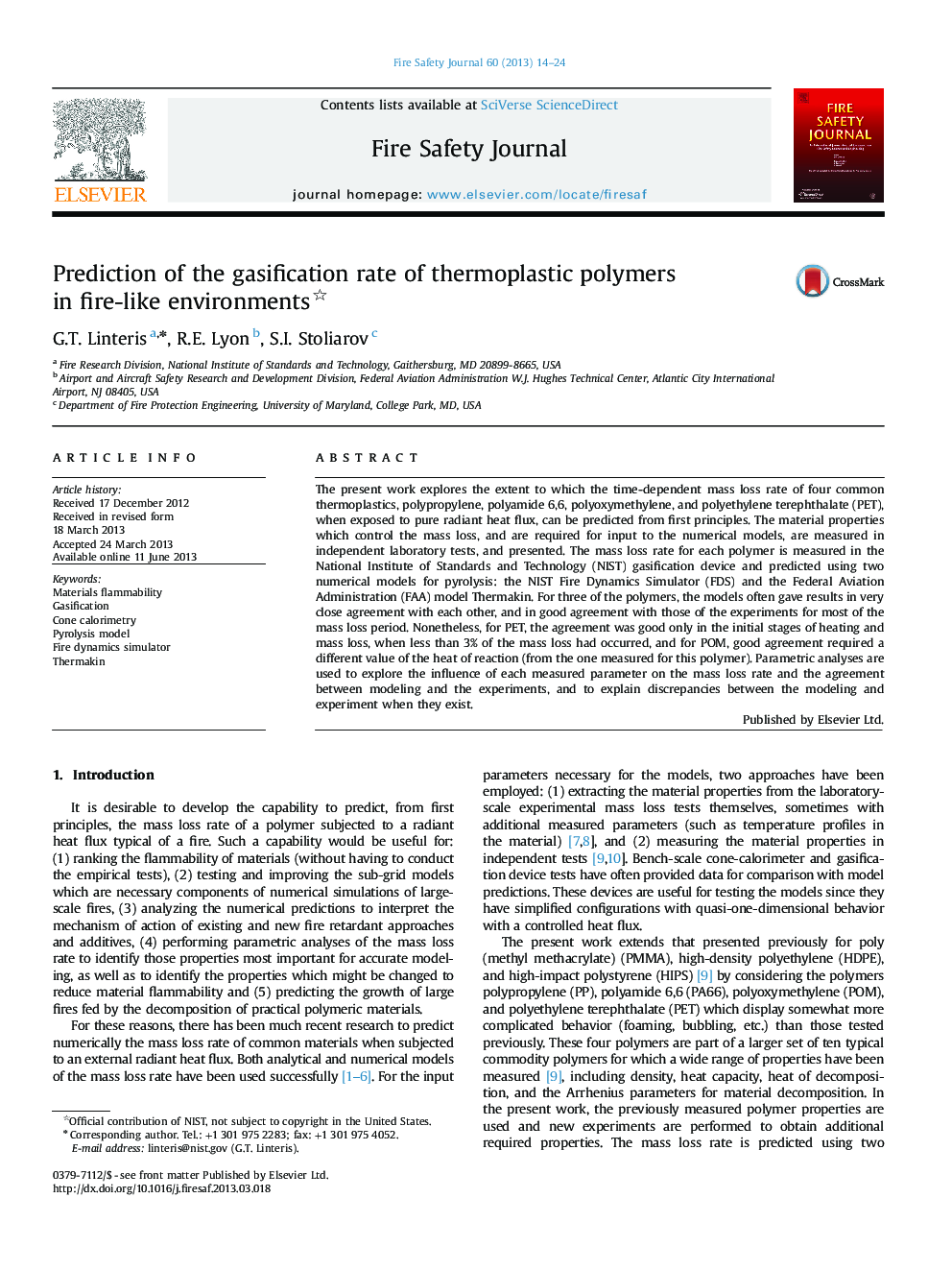| کد مقاله | کد نشریه | سال انتشار | مقاله انگلیسی | نسخه تمام متن |
|---|---|---|---|---|
| 270000 | 504723 | 2013 | 11 صفحه PDF | دانلود رایگان |

• The fundamental physical parameters for simulating pyrolysis are measured independently.
• The time-dependent gasification rates of four thermoplastics are predicted from first principles.
• Differences between the experiment and prediction are explored through parameteric analyses.
• Foaming, intumescence, and multi-stage decomposition pathways may sometimes be important.
The present work explores the extent to which the time-dependent mass loss rate of four common thermoplastics, polypropylene, polyamide 6,6, polyoxymethylene, and polyethylene terephthalate (PET), when exposed to pure radiant heat flux, can be predicted from first principles. The material properties which control the mass loss, and are required for input to the numerical models, are measured in independent laboratory tests, and presented. The mass loss rate for each polymer is measured in the National Institute of Standards and Technology (NIST) gasification device and predicted using two numerical models for pyrolysis: the NIST Fire Dynamics Simulator (FDS) and the Federal Aviation Administration (FAA) model Thermakin. For three of the polymers, the models often gave results in very close agreement with each other, and in good agreement with those of the experiments for most of the mass loss period. Nonetheless, for PET, the agreement was good only in the initial stages of heating and mass loss, when less than 3% of the mass loss had occurred, and for POM, good agreement required a different value of the heat of reaction (from the one measured for this polymer). Parametric analyses are used to explore the influence of each measured parameter on the mass loss rate and the agreement between modeling and the experiments, and to explain discrepancies between the modeling and experiment when they exist.
Journal: Fire Safety Journal - Volume 60, August 2013, Pages 14–24